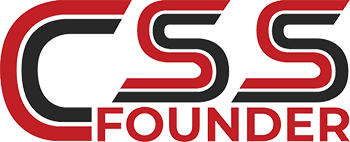In today’s digital age, having a strong online presence is crucial for businesses of all sizes. For companies in Columbus, Ohio, investing in a well designed website can be a game changer. However, one of the most common questions that arise when considering website development is: “How much will it cost?” This article aims to provide a detailed overview of website development costs in Columbus, helping you understand the factors that influence pricing and what to expect when budgeting for your project.

Cost Ranges for Website Development in Columbus
Website development costs in Columbus can vary widely depending on the project scope and the service provider. Here’s a general breakdown of what you might expect:
-
Basic Informational Websites: $1,000 $5,000
These simple sites typically include a home page, about page, services or products page, and contact information. They’re often built using templates or basic custom designs.
-
Small Business Websites: $5,000 $15,000
These sites offer more pages, custom design elements, and basic functionality like contact forms or simple booking systems. They may also include basic SEO optimization and mobile responsiveness.
-
Midsized Business Websites: $15,000 $30,000
These more complex sites often feature custom designs, advanced functionality, content management systems, and ecommerce capabilities for businesses with larger product catalogs.
-
Large Business or Ecommerce Websites: $30,000 $75,000+
Highend websites for larger corporations or complex ecommerce platforms fall into this category. They often include advanced features, integrations with other business systems, and sophisticated designs.
-
Custom Web Applications: $50,000 $250,000+
Highly specialized web applications with unique functionality, such as booking systems, member portals, or industry specific tools, can command premium prices due to their complexity and customization.
Factors Affecting Website Development Costs
-
Website Complexity:
The complexity of a website is a major factor in determining its cost. A simple informational site with a few static pages will be less expensive to develop compared to more complex projects. Ecommerce platforms require additional features like product catalogs, shopping carts, and payment gateways, which increase development time and cost. Custom web applications with unique functionalities, database integrations, and complex user interactions are typically the most expensive to develop due to their bespoke nature and the specialized skills required.
-
Design Requirements:
The design of a website significantly impacts its cost. Templatebased designs, which use premade themes or layouts, are generally less expensive as they require less custom work. However, they may limit uniqueness and brand alignment. Custom designs, created from scratch to match a specific brand vision, require more time and expertise, thus increasing costs. The level of design sophistication, such as advanced animations, unique layouts, or interactive elements, will further impact the price. Highend designs with meticulous attention to detail and user experience will be at the higher end of the cost spectrum.
-
Functionality:
The features and functionalities of a website can greatly affect its development cost. Basic features like contact forms or simple search functionality are relatively inexpensive to implement. However, more advanced features can significantly increase costs:
User accounts and authentication systems
- Advanced search capabilities with filters and sorting options
- Integration with thirdparty services (e.g., CRM systems, payment gateways, social media platforms)
- Custom calculators or interactive tools
- Membership areas with restricted content
- Multilanguage support
- Advanced analytics and reporting features
Each additional feature requires development time, testing, and often ongoing maintenance, all of which contribute to the overall cost.
-
Content Management System (CMS):
- The choice of CMS can have both shortterm and longterm cost implications:
- Opensource CMS like WordPress or Drupal can reduce initial development costs but may require more customization for complex sites.
- Proprietary CMS solutions might have higher upfront costs but could offer more tailored features and potentially lower longterm maintenance costs.
- Custombuilt CMS solutions are typically the most expensive option but provide the highest level of customization and control.
- Headless CMS options are becoming popular for their flexibility but may require more specialized development skills.
The choice of CMS also affects ongoing costs such as hosting, security updates, and maintenance.
-
Responsive Design:
Responsive design ensures that a website functions well and looks good on all devices, from desktop computers to smartphones. While it’s now considered standard practice, implementing responsive design does add to development costs:
- It requires additional design work to create layouts for different screen sizes.
- Development time increases as the site needs to be built and tested across multiple devices and browsers.
- More complex responsive designs, such as those with adaptive content or advanced mobile features, will further increase costs.
-
Ecommerce Capabilities:
Implementing ecommerce functionality significantly increases website complexity and cost. Key elements that contribute to ecommerce costs include:
- Product catalog management systems
- Shopping cart functionality
- Secure payment gateway integrations
- Order processing and management systems
- Inventory tracking and management
- Customer account features
- Tax and shipping calculations
- Security measures for handling sensitive customer data
The scale of the ecommerce operation (number of products, transaction volume, etc.) will also impact the overall cost.
-
SEO and Marketing Features:
Incorporating SEO best practices and marketing tools during the development phase can increase initial costs but may lead to better performance and ROI in the long run. This might include:
- SEOfriendly URL structures
- XML sitemap generation
- Schema markup implementation
- Integration with Google Analytics and other tracking tools
- Social media integration
- Email marketing system connections
- Blog or news section functionality
- Landing page templates for marketing campaigns
The depth of SEO and marketing feature integration will affect the overall development cost.
-
Developer Expertise:
The expertise level of the developers or agency hired for the project significantly impacts cost:
- Junior developers or offshore teams may offer lower rates but might require more time or oversight.
- Experienced developers and reputable agencies typically charge higher rates but can often complete projects more efficiently and with higher quality.
- Specialized expertise (e.g., in certain industries or technologies) usually commands premium rates.
- The location of the development team also affects costs, with rates varying significantly between different countries and regions.
Higher expertise often translates to better code quality, improved security, and more efficient problem solving, which can lead to lower longterm maintenance costs and better overall performance of the website.
Additional Costs to Consider
When budgeting for website development in Columbus, keep in mind these potential additional expenses:
- Domain Name: $10 $50 per year
- Web Hosting: $50 $500+ per year, depending on your needs
- SSL Certificate: $0 $200+ per year (some hosts offer free certificates)
- Content Creation: $500 $5,000+, if you need professional copywriting or photography
- Ongoing Maintenance: $500 $5,000+ per year for updates, security, and technical support
Choosing the Right Developer in Columbus
Columbus boasts a thriving tech scene with numerous talented web developers and agencies. When selecting a partner for your project, consider the following:
- Portfolio: Review their previous work to ensure their style aligns with your vision.
- Expertise: Look for developers experienced in your industry or with similar projects.
- Reviews and Testimonials: Check online reviews and ask for references from past clients.
- Communication: Ensure they understand your goals and can explain technical concepts clearly.
- Pricing Structure: Understand their billing method (hourly, projectbased, or retainer) and what’s included in their quote.
CostSaving Tips for Website Development in Columbus
If you’re working with a limited budget, consider these strategies to reduce costs:
- Start with a Minimum Viable Product (MVP): Begin with essential features and add more as your business grows.
- Use a Content Management System: Platforms like WordPress can reduce development time and costs.
- Opt for a Template based Design: Customizing a premade template is often cheaper than a fully custom design.
- Prepare Your Content in Advance: Having your text and images ready can speed up the development process.
- Consider Local Freelancers or Smaller Agencies: They may offer competitive rates compared to larger firms.
Conclusion
Website development costs in Columbus can vary significantly based on your specific needs and the complexity of your project. While it’s tempting to opt for the cheapest option, remember that your website is often the first point of contact between your business and potential customers. Investing in a well designed, functional website can pay dividends in the long run through increased visibility, credibility, and conversions.
When planning your website development project, take the time to clearly define your goals, research potential partners, and create a realistic budget that accounts for both initial development and ongoing maintenance costs. By understanding the factors that influence pricing and being prepared with a clear vision, you’ll be better equipped to find the right balance between cost and quality for your Columbus based website.








